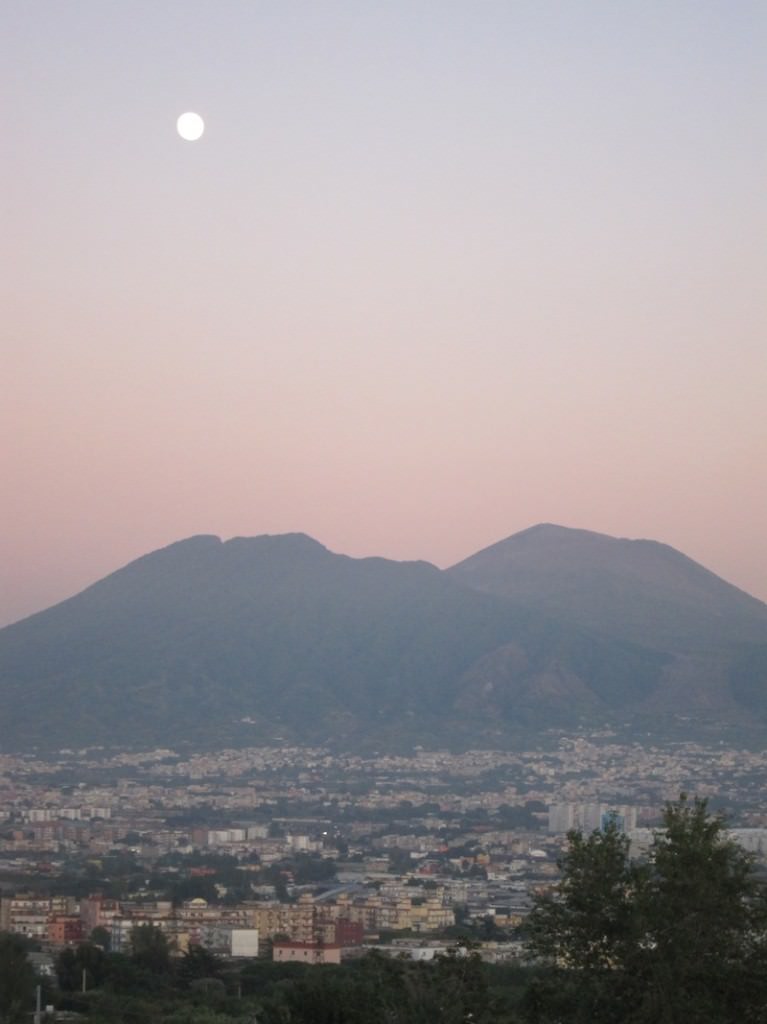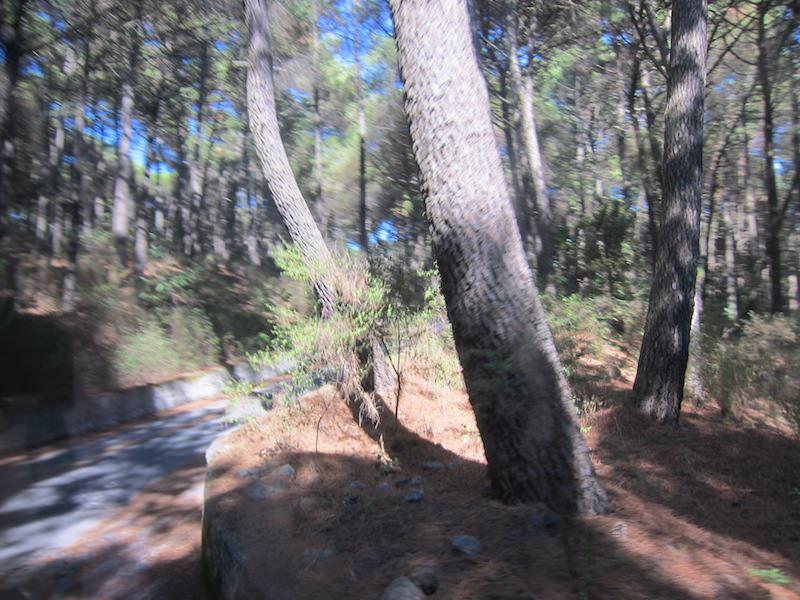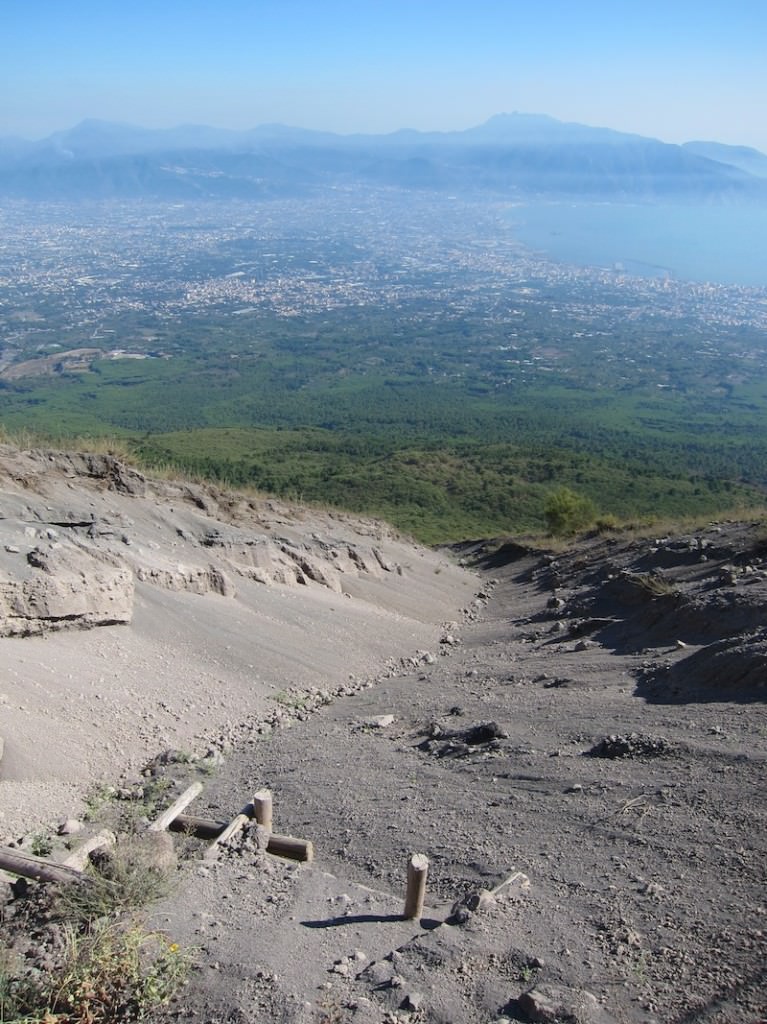Mount Vesuvius in August was dry, dusty, hot, and absolutely worth the effort. By the time the rusted clock at the Pompei Scavi train station ticked around to noon, I had already spent four hours in the ruins of Pompeii and was therefore thirsty, footsore, and sunburnt. From the station platform, Mount Vesuvius loomed in the distance, a dark blue outline in a pale blue sky.
I hadn’t really considered climbing the mountain. It sounded like the kind of thing far more adventurous travelers did, and I was wearing sandals and no sunscreen. However, cleverly positioned between me and the local gelato stand was a grey plastic model of the dormant volcano, along with a display of photos of happy adventurers trailing after a khaki-shorted guide. All were posing for keepsake photos with sweeping vistas in the background.
For 20E the sign promised an air-conditioned ride through ancient, mountain, pine forests; as well as an expert guide to explain the long-dormant volcanic activity, and a beautiful view from the local winery housed at the top of the peak. It was one of several signs for similar operations in the two blocks around the train station. I had already finished my bottle of water and had abandoned the shade of the cameo jewelry street stalls, where a local salesman gave me a one-time-offer-because- you-have-such-beautiful-blue-eyes-bella; and I was in need of a destination.
So, I bought a ticket.
Fifteen minutes later, an antique school bus in a peeling coat of red paint pulled up to the store. The bus had no air conditioning, but with windows cracked down, a slight breeze was enough to make it relatively pleasant. The bus careened its way through busy streets to the foot of the mountain. We parked in the shade of a pine grove and disembarked, only to re-embark onto a larger bus with larger wheels and smaller windows.
The bus wound its way through a shaded forest of giant pine trees and blue sky, and then past the tree line and out into the glaring hot sun, where glimpses of vast skylines dropped into the distant ocean.
We arrived in a gravel parking lot, where we were ushered off the bus and up to a small, wooden hut where we displayed our tickets to the woman inside who sold mountain guidebooks for 3E each. There was no expert guide; no easy trail; no bus to the top. There was only a dust-pebble path cut into the side of the hill with a rope slung limply between leaning wooden posts, presumably meant to serve as an anchor in case of an ash avalanche like the ones that had already cleared out the much of the scenery below.
Seeing only one way up, I decided it would be hard to get lost and declined the extra guide. The climb was steep and slippery with loose sand and grit. I made an effort to pick up my feet so that my sandals would stop scooping cupfuls of soft sand between my toes. The twenty to thirty minute hike is not extreme, and a person of reasonable fitness can easily succeed. The hike, however, is unassisted, on uneven terrain, and carried out in the baking sun with no place to rest. Some of our tour group looked dubiously at the path and decided to wait in the shade by the guide-selling hut and admire the scenery from there.
As motivation to reach the top of Mount Vesuvius, hikers are usually pleased to find a local winery and three souvenir shops at the peak. One souvenir shop just wasn’t enough, I guess. The winery sells local-grown wines, honey beers, and bottles of cold water at surprisingly reasonable prices (1E each).
I drained my bottle and stood in the shade of the souvenir shop, glancing quickly at hematite bracelets, pendants and earrings, volcanic rock statues, and the ubiquitous key chains and fridge magnets that are a staple of any souvenir shop.
The volcanic crater, it turns out, was a dirt pit: a hole in the ground with rock edges filled with grey sand. I wondered if some of it might have been ash, slowly dusting the fiery pit consuming Pompeii. Mostly, though, it was quiet and grey. Faint red-brown striations lined the sun-bleached rocks along the pit’s north end, but it was obvious why the sweating, shade-seeking, water-sucking tourists stared not into the crater but out. They looked down the mountain to the ocean, the city, and the coast below as they spread out beneath the eye and faded into a far distant blue haze horizon. There was something majestic about the view from the top of the mountain, but something equally awesome about the sight of its mass in the distance.
So, would I would climb it again? Maybe, just not wearing sandals.
>>Make sure to check out our Hiking Packing List for Day Hikes and Multi Day Treks.
Written by Guest Contributor Anne Siders for EuropeUpClose.com
Anne Siders is a foot-path traveler who delights in the off-beat, the ancient, and the active. She travels for work and for pleasure, and for the opportunity to write and photograph it all.





Kathy
Friday 24th of April 2015
Can I order any souvenir items from Mount Vesuvius?
I was in Italy last year and did not get to climb the Mountain. Just saw it's beauty at a distance from Pompeii and Sorrento.
Pompeii, Italy: Where Time Stands Still | EuropeUpClose.com
Saturday 23rd of March 2013
[...] workshops, theatrical shows, and homes with elaborate courtyards. Then, one disastrous August day, Mount Vesuvius blew. The volcano’s eruption smothered Pompeii and everything in it under 60 feet of ash. There [...]